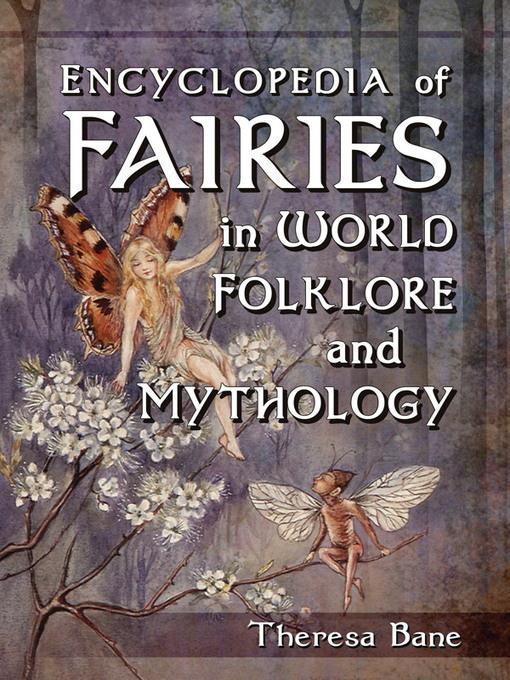
Encyclopedia of Fairies in World Folklore and Mythology
کتاب های مرتبط
- اطلاعات
- نقد و بررسی
- دیدگاه کاربران
نقد و بررسی

November 15, 2013
Bane (Encyclopedia of Vampire Mythology; Encyclopedia of Demons in World Religions and Cultures) is an independent scholar/speaker/writer in the area of the supernatural. She clearly states that she is intentionally not including a stance on whether fairies have existed or exist still; the message is the mythology and history of the fey. Entries cover more than 2,000 individual fairies (Bukura e dheut, Kludde, Sjarr) and species of fairy (Danaids, Buttery Sprites, Valkyries) from around the world and across time, as well as helpful entries on the phenomenon as observed in various geographic areas ("African Fairy Lore"). Most entries range between one and three paragraphs in length; they discuss the origin and historical development of the being and close with a bibliography. The volume is well indexed and has an extensive stand-alone bibliography. Other encyclopedias on the subject do exist, often with a Celtic bent--Katharine Briggs's Fairies in Tradition and Literature is a good example--and although Carol Rose's Spirits, Fairies, Gnomes, and Goblins: An Encyclopedia of the Little People is more global, it does not focus exclusively on fairies. Both Rose's and Briggs's works have illustrations, however--something that if included in this title, likely would have tipped it into the must-have category. VERDICT Well done. For writers, mythologists, and fairy tale lovers and scholars in high school, public, and academic libraries.--Lura Sanborn, St. Paul's Sch. Lib., Concord, NH
Copyright 2013 Library Journal, LLC Used with permission.

December 1, 2013
Gr 9 Up-More than 2,500 beings and species of the fairy ilk are described in this comprehensive tome. The entries are organized alphabetically by entry name in bold type. The length of entries varies from a few sentences to several paragraphs. The countries of origin of the creatures covered reflect global diversity, with featured fairies hailing from all over Europe, North America, South America, the Middle East, and Africa. Cross-referencing is inconsistent. For example, one variation of "Knock Ma Fairies" is "Cnoc Ma Fairies." The latter does not have a separate entry in the "Cs" so readers have to know to look in the "Ks." Also, one variation of "Knockers" is "Black Dwarfs," and the entry for the first describes something different from the entry for the latter. The writing is straightforward, but geared toward readers who have a solid understanding of world legends: "Born one of the 3,000 daughters of the Titians, Oceanus and Tethys, Hesione was one of the named OCEANIDS and the wife of the Titan Prometheus in Greek Mythology." Extensive source notes and citations boost the appeal of the title for academians. There is no pronunciation guidance, which is problematic with so many names from different cultures: Nuada Airgetlam, Tomtegubbe, Yunw Tsunsdi, for example. Only for those with intense interest in fairy lore.-Jennifer Prince, Buncombe County Public Libraries, NC
Copyright 2013 School Library Journal, LLC Used with permission.

December 15, 2013
This meticulously researched volume catalogs more than 2,000 fairies, or fay, in brief AZ entries. Fairies and nature spirits from around the world, including those in traditional and regional fairy stories, are included; fairies that do not have folkloric originssuch as J. M. Barrie's original creation Tinkerbellare not included. Encyclopedia entries include variations of the fairy name as well as sources for that particular entry. The author also provides an extensive bibliography and a complete index. There are no images in this volume, which seems a shame. This book would be most helpful for academic libraries supporting curriculum in folklore and mythology.(Reprinted with permission of Booklist, copyright 2013, American Library Association.)

























دیدگاه کاربران